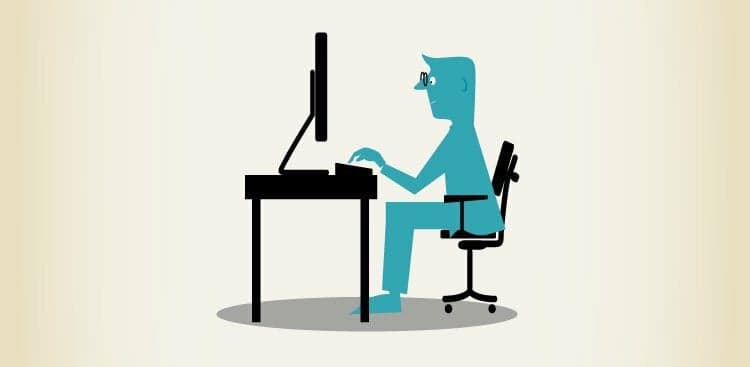It’s no secret that almost every professional is on a quest to find the best productivity hacks out there. Whether it’s tips for answering emails faster or solutions for using your schedule more efficiently, people have all sorts of ideas for how to shorten the amount of time it takes to do just about everything.
However, despite all of the advice out there, have you ever tried out some of these magical productivity hacks and found that they didn’t help you in the slightest? If so, here’s a hard truth: You might’ve been doing them wrong.
Not sure what you can improve upon? Here are five ways you may be messing up common productivity hacks—and how to fix your mistakes.
1. Making a Too-Long To-Do List
Words cannot describe how many times people have told me that a to-do list just doesn’t work for them. When I ask what specifically they don’t like about task managers or lists, the usual response is something like, “I just never feel like I get everything on the list done.”
If this is happening to you, trust me when I say there’s an easy fix.
Try This Instead
While there are tons of different theories about the length and intensity of daily and weekly to-do lists words, it’s better to have two or three big tasks and a couple of smaller tasks to do than a list of 20 things you need to get done by sundown.
If you’re new to making a to-do list, start small (only four or five action items per day) and use a simple tool or app to write down your tasks (like MacBook’s reminders app or just a traditional paper list). For everything else, I like to keep a separate tab on my MacBook reminders app for tasks that need to be done at a later date (aptly called “Later To-Do”), so that I am only focusing on what’s most important on any given day or week. I would highly recommend doing something similar, regardless of whether you have a paper list or a digital one.
2. Getting on a “Normal” Sleep Schedule
Experts are constantly talking about the importance of sleep and going to bed earlier, but many people who try it out actually find that they’re more exhausted instead of more refreshed. How do you get the hours of sleep you need while still making sure it’s meaningful slumber?
Try This Instead
Sure, the old adage of “early to bed, early to rise” works for some people, but it sure doesn’t feel that way for everyone. So, instead of conforming to the old notions of what “normal” sleep hours are, find the best system that works for you and your schedule. For example, if you feel like you’re most productive during the wee hours of the morning, take a nap earlier in the evening, wake up, then take another nap at some point during the day to cover the sleep you aren’t getting.
Not sure how to find your ideal sleep time and amount of sleep? There are some crazy suggestions out there (some involve locking yourself in a remote cabin without electricity to get on a natural cycle), but a little planning and some math can do the trick. Dr. Michael Breus, an insomnia expert, recommends heading to bed seven and a half hours before your wake time and adjusting your sleep schedule by 15 minutes depending on how you feel.
3. Being Distracted While Answering Email
One of the biggest annoyances for professionals is the constant stream of emails that come in, and many have started using the trick of scheduling time specifically for answering messages instead of just replying as they come in all day.
However, despite using this tactic, it can still feel like you’re not getting much done during your “answering email” slot. What gives?
Try This Instead
What’s one of the biggest productivity killers, especially in the realm of answering email? Other distractions. Because working through your inbox is a usually a boring task, it’s easy to want to check your phone or talk to co-workers while doing it. However, these small and seemingly innocuous distractions are actually costing you from getting your work done.
Instead, find somewhere quiet to check your email during your allotted time, and turn off your push notifications and alerts (and even your phone, if possible) while you’re at it.
4. Getting Too Organized
You decide one day that you need a clutter-free workspace, so you put things into drawers, re-file all the papers in front of you, and throw out half the things sitting on your desk.
However, you then realize a couple of days later that you now have no idea where anything is and you might have actually thrown out some important documents in the midst of your cleaning kick.
Try This Instead
Going from zero to 60 in two seconds can leave you feeling disoriented, especially in the realm of organization. Thus, instead of completely cleaning your entire professional life in a matter of hours, work in chunks and take your time over the course of several days or weeks to get yourself organized.
For example, start with the giant stack of miscellaneous documents that has been sitting on your desk since you started your current job. Take time to carefully figure out how you’d like to store all of these documents (Filing cabinet? Desk organizer?) before you start cleaning and throwing things out.
Additionally, don’t throw out whatever you put in the “toss” pile for a couple of days after you clean just to make sure that you have everything you need.
5. Downloading Too Many Apps
It’s funny how, sometimes, the more productivity apps you add to your phone or computer, the less productive you become. This is one of the simplest productivity hacks to do wrong, but it’s also incredibly easy to fix.
Try This Instead
Treat your productivity apps for you, weigh the pros and cons of that app, and be ready to focus on improving your use of that app over time.
For example, pretend you’re in the market for a great document organizing app. Spend some time searching for applications people recommend (and don’t recommend), research the particular specs of those apps, and when you finally download, schedule time to read more about how to get the most out of this one app.
In my experience, investing more time and energy into how to use a single app at a time has led to me not only having an army of applications I actually like and use fully, but also knowing how to utilize all of the features on every single one of my apps.
Overall, the biggest mistake people make productivity hacks is not being deliberate when thinking about how to use them. There’s an assumption that because you’re trying something new, it’ll have maximum impact without having to try too hard, and that’s rarely the case.
Remember, productivity hacks can be help, but they aren’t a magical genie.

